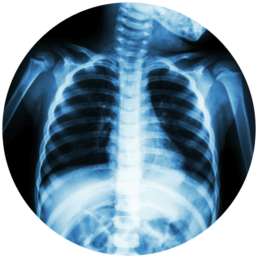Pediatric Spine

Pediatric Spine Symptoms & Treatment Options
A number of different spinal conditions can affect babies, children, and adolescents. Whether a condition is present from birth, develops as they get older, or is caused by a traumatic injury or disease, it can be a challenging experience for both the child and their parent.
The effects of pediatric spinal conditions can be seen and experienced in different ways. Some conditions can affect mobility and the individual’s ability to move around in the world. This can interfere with their ability to participate in interactive play with peers, which is an important aspect of human development. Other conditions affect the neurological component of development, which can disrupt coordination and negatively affect the growth and function of the nerves and spinal cord.
Whatever the cause, it is important to seek the assistance of a medical professional regarding any childhood conditions of the spine. These ages are a crucial time in skeletal development, and arguably the best time to deal with any skeletal problems. Once a person has reached adulthood, altering the bones becomes a much more difficult, and sometimes invasive, task. Our award-winning doctors at the Advanced Spine Center have years of experience in treating complicated and multifaceted spinal disorders in children. You can trust our surgeons to work with you and your child one-on-one to develop an individualized treatment plan.
Common Types of Congenital Spine Conditions
There are many different types of spinal disorders that can affect infants, young children, or adolescents. Some of the most common types of spinal disorders that affect children at birth include:
Spina Bifida: With three levels of severity, spina bifida is a deformity in the growth of the vertebrae that surround the spinal cord. In the most severe cases, the spinal nerves may bulge out of the back, possibly even becoming exposed through the skin. This instability, due to spinal cord malformation, can lead to muscular degeneration and spasms, as well as abnormal spinal curvature.
Split-Cord Malformation: Split-cord malformation is just as it sounds; the division of the spinal cord into two separate cords. There can sometimes be a bony fragment that runs in between these two cords. This bony division can practically form two spinal canals instead of one. Tethered cord may occur, leading to neurological complications as the spinal cord embeds in surrounding tissues.
Common Types of Adolescent Spine Conditions
Some of the most common types of pediatric spine conditions that emerge in adolescence include:
Scoliosis: Scoliosis is the abnormal curvature of the spine, typically from side-to-side in an s-curve or in one large c-curve. The spine can also twist in connection with this abnormal curvature. More often seen in female children and adolescents, the severity of this curve can vary greatly. Elements (such as genetics or neuromuscular disruptions) often direct the trajectory of how this spinal deformity will develop. Read more…
Scheuermann’s Disease: This condition appears in children and adolescents and is similar to kyphosis in that it causes an exaggerated hump in the thoracic spine. Rather than caused by age-related degeneration, Scheuermann’s disease is caused by the abnormal growth of spinal bones. Nerve compression caused by this condition can cause painful symptoms.
Spondylolysis: As it occurs in adults as well, spondylolysis is what we would consider a fracture of the bones due to stress. In children and adolescents, repetitive use of certain joints, especially the lower back, causes this condition. Those who participate in sports such as gymnastics, rowing, and football may experience this painful condition.
Didn’t see your child’s condition mentioned on this list? Don’t fret! Our team of orthopedic surgeons at the Advanced Spine Center ranks among the best pediatric spinal surgeons in the world. Our surgeons are internationally recognized for diagnosing and correcting the most complex pediatric spine cases known to orthopedic medicine.
Common Causes of Pediatric Spine Conditions
The list of possible causes for pediatric spine conditions is many, with congenital causes falling near the top of the list. Congenital is a term that refers to those who are born with the genes for a particular condition. Symptoms of the condition may show up at birth, while others may appear later in childhood. (This is especially common with scoliosis, as the condition tends to appear in late childhood into adolescence.) Your doctor can even perform a test while your baby is in utero to check for possible congenital spine conditions.
Another broad categorical source of pediatric spine conditions is neuromuscular causes. These conditions often stem from neuromuscular disorders such as cerebral palsy or spinal bifida. These specific diseases affect the spinal cord and nerves, which can lead to long-term muscular issues. Muscles can develop in abnormal directions or become spastic and weak. This in turn can cause the vertebral column to form abnormally, leading to scoliosis, kyphosis, or other skeletal challenges.
For others, the trigger for the development of a pediatric spinal condition may be completely idiopathic, or unknown.
Additional possible causes for pediatric spinal conditions are as follows: bone dysplasia (abnormal bone growth), variation in leg lengths, spinal cord injury with a degree of paralysis, cancer and tumors, or spinal infections such as meningitis.